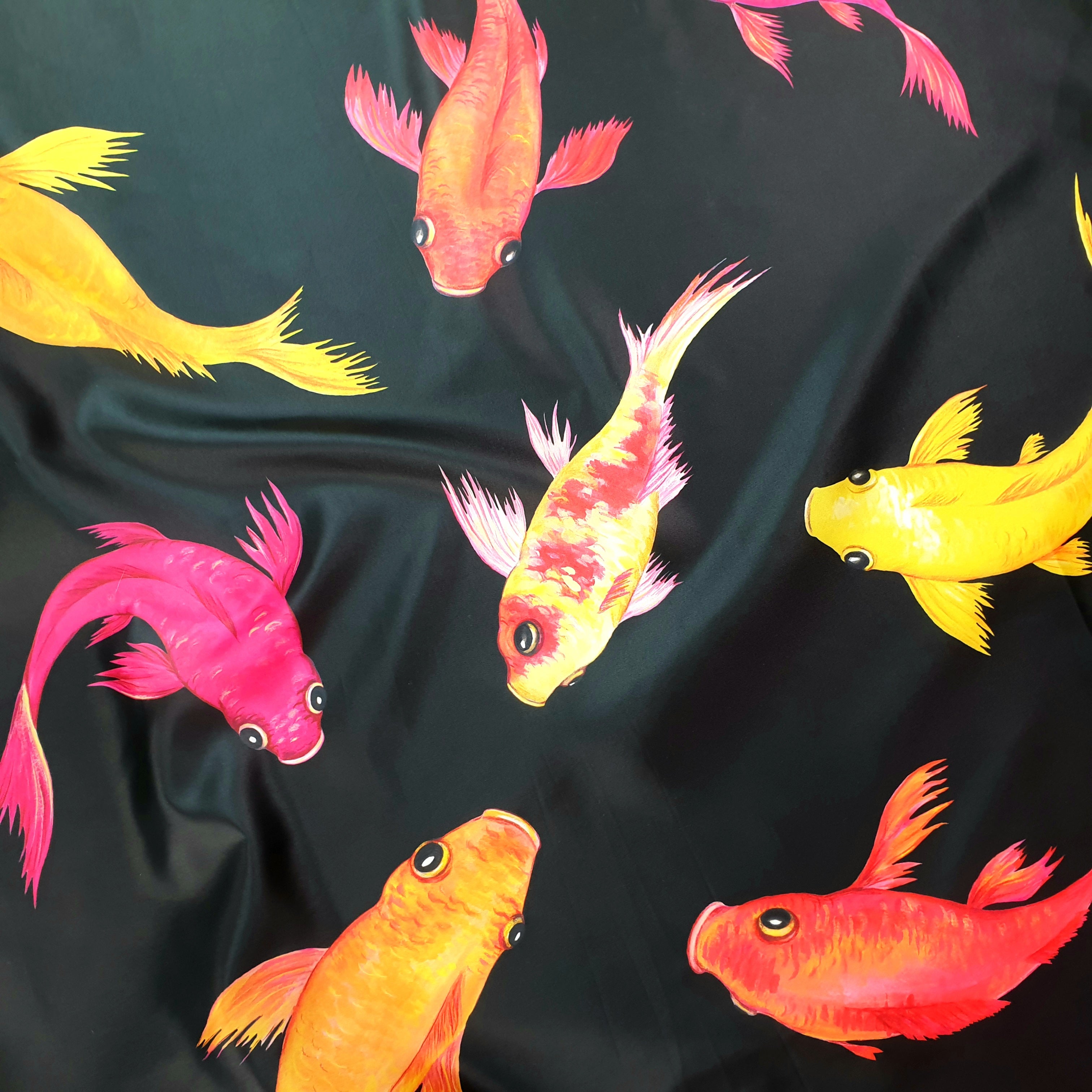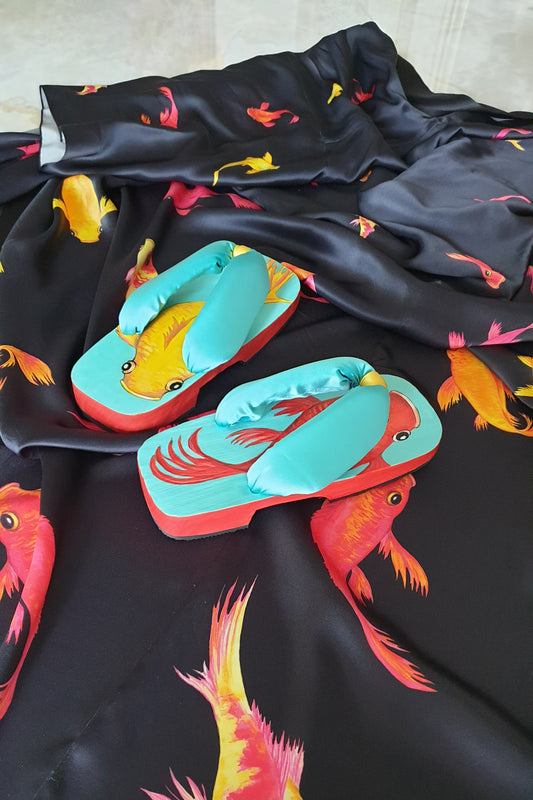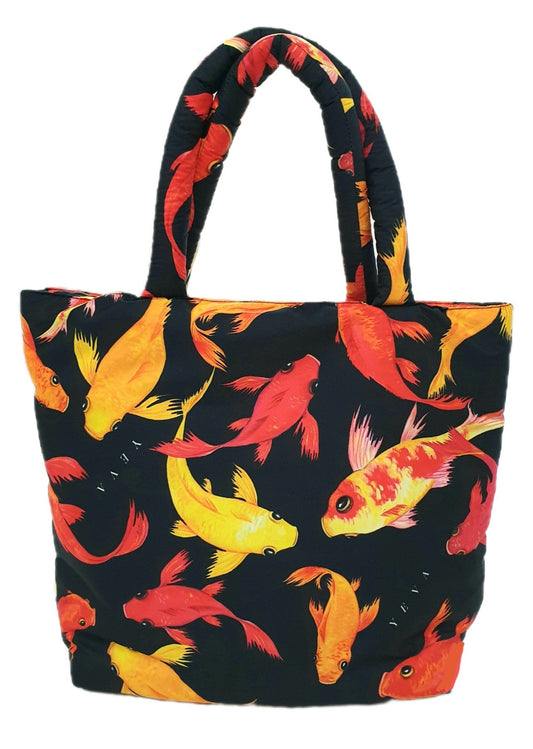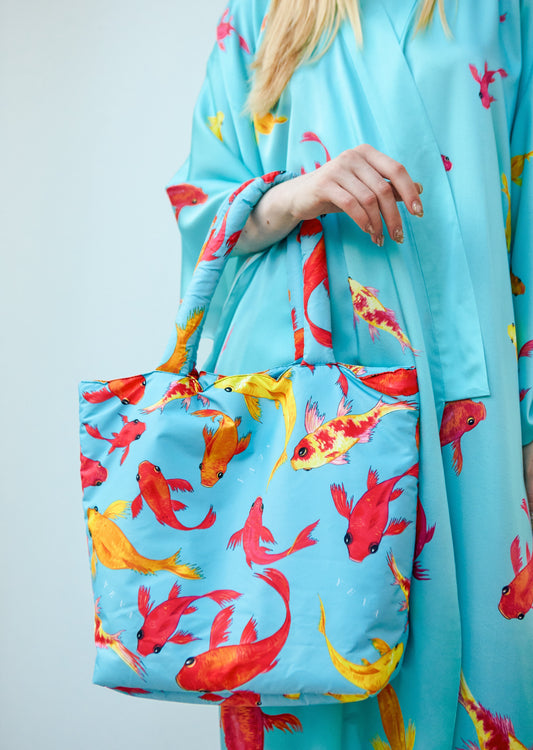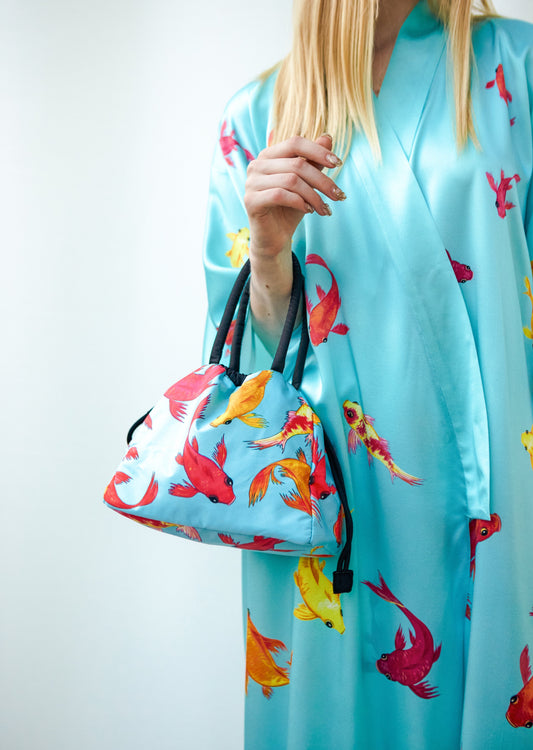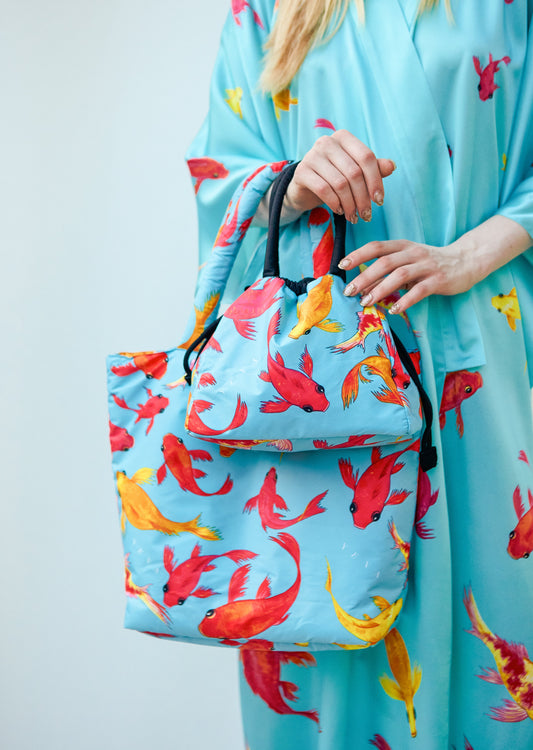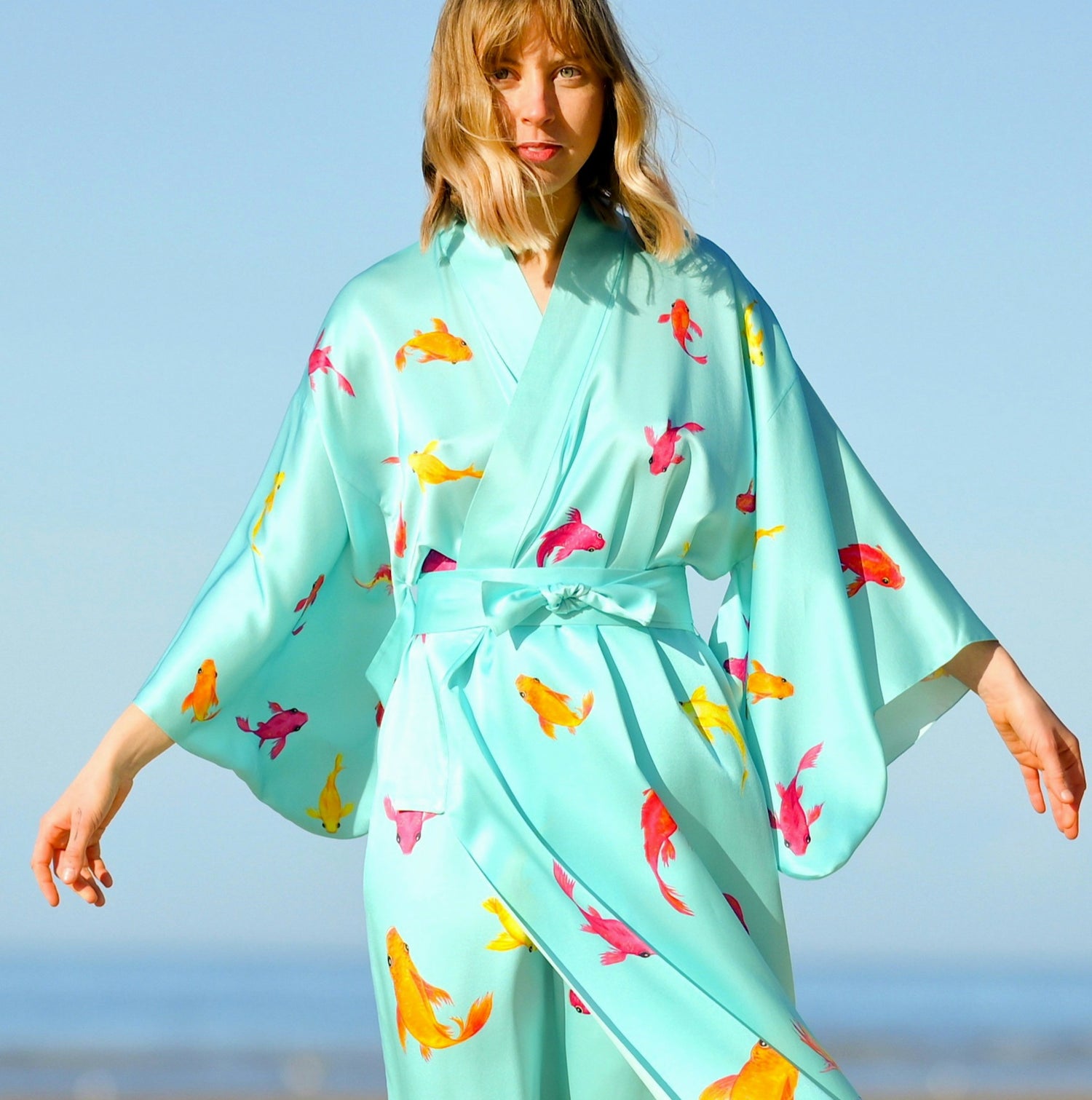
KOI
I have always loved these fish... wherever I encounter them, I gladly immerse myself in contemplating the movements of these shapes and colors... And one day, I drew them.
It happened after an hour-long meditation I had at a pond with these fish on the island of Mauritius. Fish from all over the pond swam towards me, and we seemed to become one. When I decided to leave, I walked around the pond and stopped to say goodbye. The carp lined up in a straight column and swam towards me across the entire pond. It was magical!
Since that moment, I constantly wanted to draw them. And I was able to bring the idea to life 1.5 months later on the neighboring Seychelles islands.
On my fabrics, I depict Kohaku and Ogon Koi, which bring luck, longevity, and well-being!
Why carp?
The carp is a beloved fish in China and Japan. It symbolizes strength and diligence. It also represents abundance and excess. Excess and Fish are even represented by the same hieroglyph. Following its spawning grounds, its goal, the carp overcomes turbulent waters of the river. And if it jumps over a waterfall, it becomes a Dragon!
Here are a few interesting facts from the modern history of Koi: Koi Carp or Nishikigoi (Japanese) is considered a fish that has gone through six selective breedings and fits into one of 14 categories.
The Japanese imported carp from China, and for some Japanese regions, it was the only source of protein for peasants. Until the carp started to mutate, and fish with non-standard patterns began to be bred and even deliberately crossed.
This passion gradually spread to the entire population of Japan. In 1914, colored koi were first presented at a Tokyo exhibition. Today, there are over 80 varieties of koi, divided into 16 groups based on their color characteristics.


